My friend Eric and I were aboard my 20′ Whitehall as we slipped out of High Hill Harbour on the southeast side of Ontario’s Lake Nipigon. With a 3-hp electric motor providing power, we glided quietly between 300’-high rock hills clad in boreal forest, and out into the wide expanse of the lake. The sky was a low, flat, winter gray; there was a modest north wind on our starboard beam, and steely gray light glimmered off the faces of the waves. I pulled the flaps of my snow hat down over my ears and turned my face from the wind. The air temperature was 41°F, and the little display screen of the portable fishfinder at my side showed a water temperature of 36° and 255′ of cold, dark water beneath us. It was the third week of May, and the winter ice had cleared only two weeks earlier. This would be no summer idyll, but the early season should be good for fishing.Eric sat stiffly at the bow wearing a down jacket and an orange rain hat pulled down over a cloth head covering. A stubble of white beard showed below his sunglasses. Between us were two 110-W solar panels spread out on deck amidships along the starboard rail—their glossy black squares and stark white border looking out of place against the sweeping curve of the teak gunwale.I turned the tiller throttle until we reached 4 mph by GPS and set the boat on a course that would take us west-southwest across 10 miles of open water to the nearest of the Macoun Islands—then barely visible as a thin, unbroken line of misty gray on the western horizon. With the course set, and the boat moving at a good trolling speed for lake trout, I propped a fishing pole against my seat, planted my foot against the cork-covered handle, opened the bail of the reel to let the line stream out astern, closed the bail, and watched the line pull tight and both pole and line vibrate softly as the lure wobbled below the surface far astern.
Join The Conversation
We welcome your comments about this article. To include a photo with your remarks, click Choose File below the Comment box.

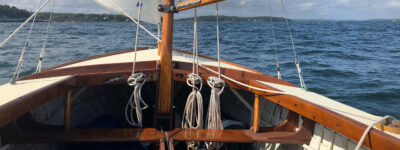
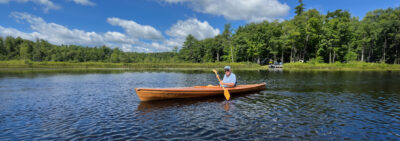
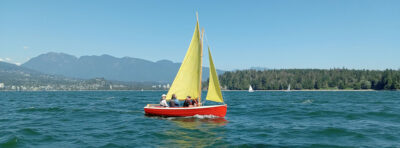
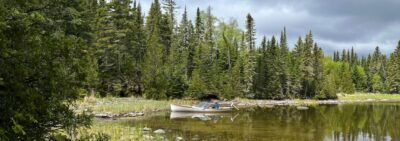
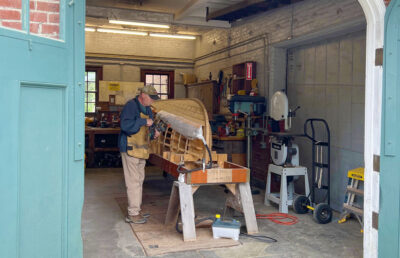
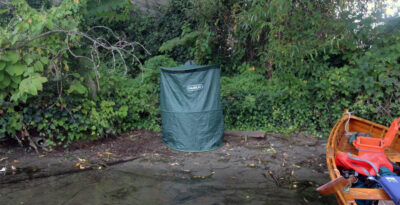


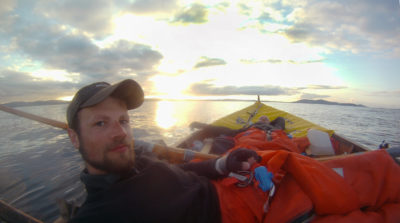
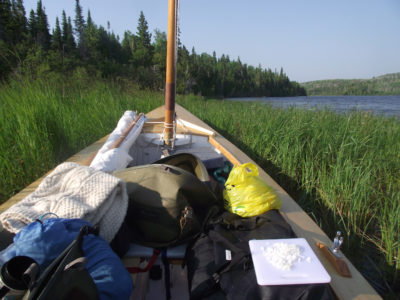
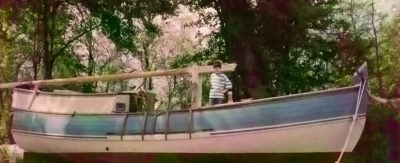
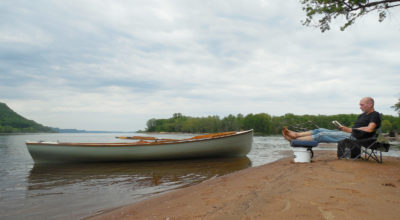
I really enjoyed this article. Would have loved a few more pictures, especially of tent and sleeping arrangements.
It must have been a magical trip.
Thanks, Cliff. Yes, we had a great trip on a gorgeous lake. The tent is Tyvek CommercialWrap, which is UV resistant and 50% thicker than HomeWrap. The seams are taped with 3M double-sided tape, which is also UV resistant. The poles are 1/4″ fiberglass. The “portholes” are cut from heavy plastic freezer bags and taped in place with the 3M tape. Mosquito net fore and aft has duct tape around the edges for reinforcement and then taped (fore) or Velcro-ed (aft) in place. The fore section of the Tyvek and the underlying mosquito net both have Velcro seams up the center to allow access to the anchor. Sitting height in the center of the tent is approx 45″ (from memory), which is several inches above sitting head height. I kept the height fairly low to reduce windage in summer thunderstorms. Over the preceding 30 years (two boats and three Tyvek tents), I have experienced thunderstorm wind speeds over 50 mph at anchor on three occasions — pretty exciting but no issues at all with the tents.
Reading your story full of wonders, found myself hungering for more details…
1) Why, do you figure, when you apparently undid the house battery’s terminal bolts, and removed the cigarette lighter, and then redid the battery terminal bolts, did the house battery once again resume charging the motor battery?
2) How many amp hours each were your house battery and motor battery?
3) What brand/make electric motor did you use?
4) During the trip, were you able to have a fair idea of how many amp hours you were using per day, versus how many you were able to recharge your batteries?
Thanks, Cliff. Yes, we had a great trip on a gorgeous lake. The tent is Tyvek CommercialWrap, which is UV resistant and 50% thicker than HomeWrap. The seams are taped with 3M double-sided tape, which is also UV resistant. The poles are 1/4″ fiberglass. The “portholes” are cut from heavy plastic freezer bags and taped in place with the 3M tape. Mosquito net fore and aft has duct tape around the edges for reinforcement and then taped (fore) or Velcro-ed (aft) in place. The fore section of the Tyvek and the underlying mosquito net both have Velcro seams up the center to allow access to the anchor. Sitting height in the center of the tent is approx 45″ (from memory), which is several inches above sitting head height. I kept the height fairly low to reduce windage in summer thunderstorms. Over the preceding 30 years (two boats and three Tyvek tents), I have experienced thunderstorm wind speeds over 50 mph at anchor on three occasions — pretty exciting but no issues at all with the tents.